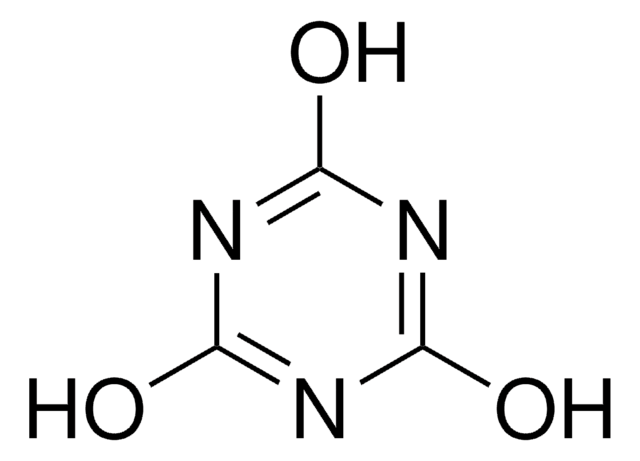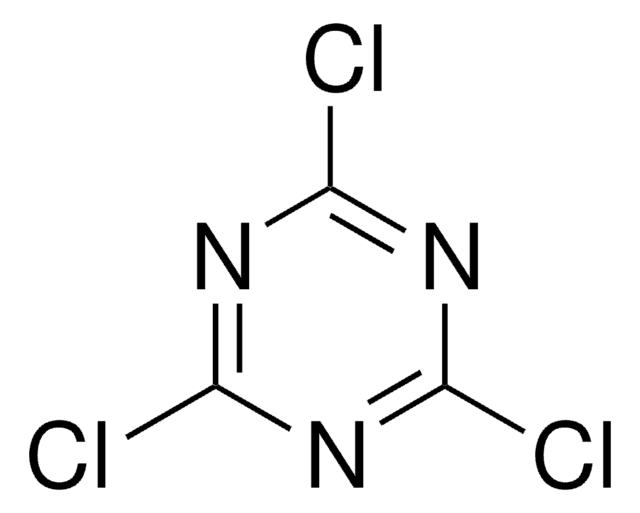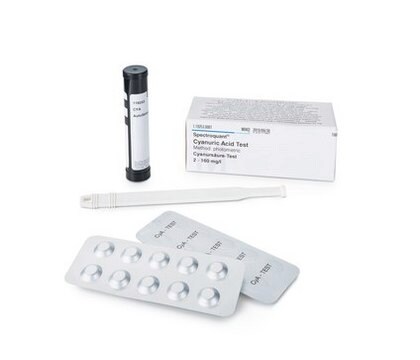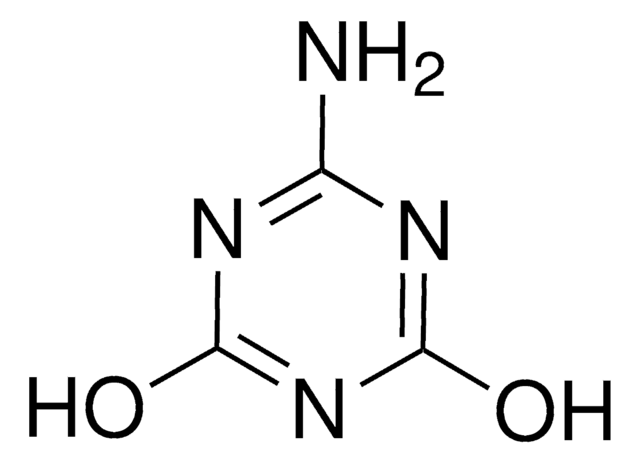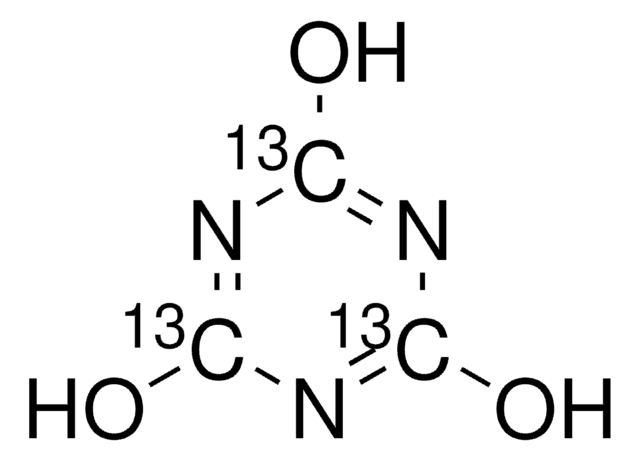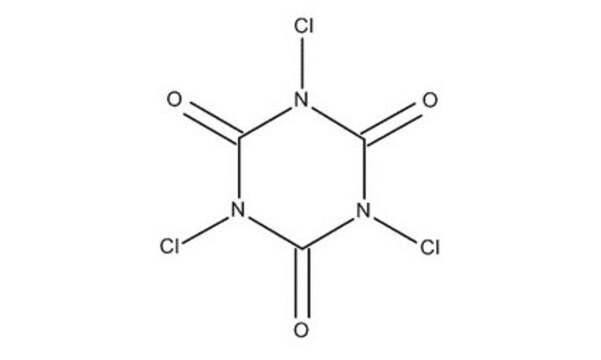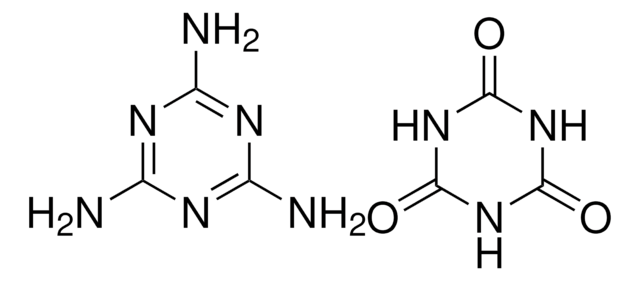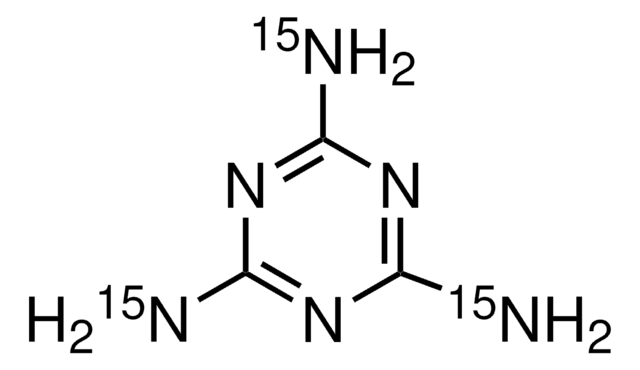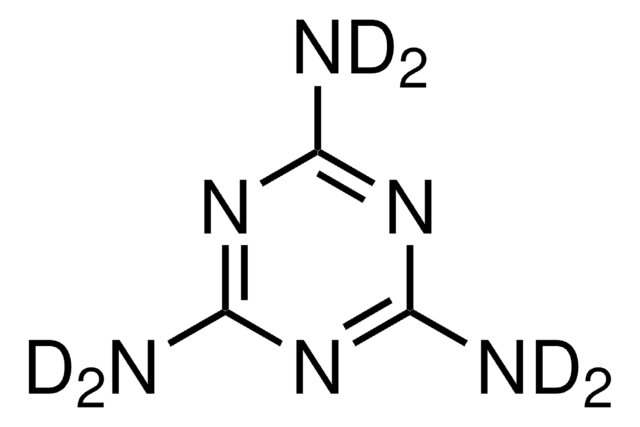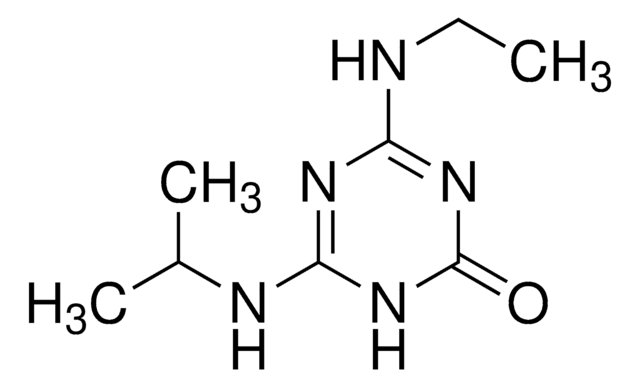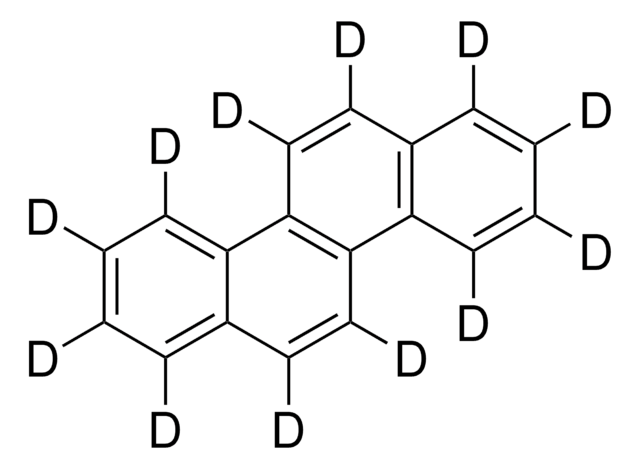16614
Cyanuric acid
analytical standard
Synonym(s):
1,3,5-Triazine-2,4,6-triol, 2,4,6-Trihydroxy-1,3,5-triazine
About This Item
Recommended Products
grade
analytical standard
Quality Level
Assay
≥98.0% (GC)
shelf life
limited shelf life, expiry date on the label
technique(s)
HPLC: suitable
gas chromatography (GC): suitable
mp
>360 °C (lit.)
application(s)
cleaning products
cosmetics
food and beverages
personal care
format
neat
SMILES string
O=C1NC(=O)NC(=O)N1
InChI
1S/C3H3N3O3/c7-1-4-2(8)6-3(9)5-1/h(H3,4,5,6,7,8,9)
InChI key
ZFSLODLOARCGLH-UHFFFAOYSA-N
Looking for similar products? Visit Product Comparison Guide
Related Categories
General description
Application
- Milk and milk products using gas chromatography with tandem mass spectrometric (GC-MS/MS) detection.
- Human urine samples and infant formula using liquid chromatography coupled to tandem mass spectrometry (LC-MS/MS).
Packaging
related product
Storage Class Code
13 - Non Combustible Solids
WGK
WGK 1
Flash Point(F)
Not applicable
Flash Point(C)
Not applicable
Personal Protective Equipment
Choose from one of the most recent versions:
Already Own This Product?
Find documentation for the products that you have recently purchased in the Document Library.
Customers Also Viewed
Our team of scientists has experience in all areas of research including Life Science, Material Science, Chemical Synthesis, Chromatography, Analytical and many others.
Contact Technical Service